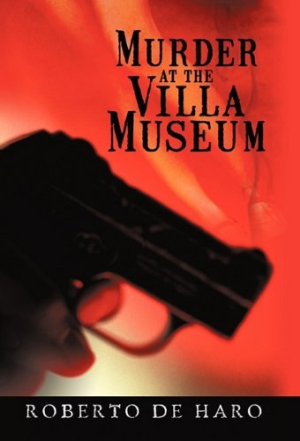Murder at the Villa Museum
In his eighth novel, the second with protagonist Los Angeles detective Dale Lipinski, Californian Roberto de Haro weaves a tale about the unsavory bedfellows of crime and politics. The killing at the heart of Murder at the Villa Museum is that of the wealthy daughter of a well-connected, ruthless tycoon. As Dale digs deeper into the crime, he finds himself plunged into the world of pornography while on the run from the victim’s father and his henchmen, who are bent on preventing the sordid details of the woman’s death from going public.
The story starts off with a bang: fights, chases, sex, and profanity-laced repartee that establish Dale as a tough, rogue, ladies man who chafes at following orders. His female coworkers are also hard-edged and quick with weapons, but the constant references to men being sexually aroused may annoy some readers. Although Dale’s exploits captivate readers, the slaying in the title does not occur until nearly one-third of the way into the novel. Like Dale and his colleagues, the victim also emerges as a round character. Los Angeles itself also becomes a character; de Haro describes the landmarks and highways of the metropolis with enough specificity to transport his audience to the City of Angels.
So many minor characters pop in and out that readers might have trouble keeping them straight. Also author has a tendency to summarize key events, such as Dale’s involvement with a woman, or when the characters update one another on the investigation. The result of this reporting is that readers are told more than they are shown. Flashbacks to events in the first novel with Dale, jar readers because these flashbacks seem shoehorned in, instead of seamlessly integrated. Occasionally, too, de Haro uses footnotes to explain matters—explanations of concepts that should be included in the story, instead of at the bottom of the page. The novel also possesses many grammatical errors, as well as overuse of certain phrases.
Be that as it may, once the murder investigation is in full swing, the suspense overpowers the novel’s missteps with its sheer momentum. The unexpected twists and turns will keep readers guessing until the very last word. Even as Dale exemplifies the charismatic, love-’em-and-leave-’em stoic, stereotypical man, de Haro manages to imbue Dale with nuance, thereby rendering him more likable. Murder at the Villa Museum will appeal to readers seeking manly men with heart, and fearless females with vulnerabilities.
Reviewed by
Jill Allen
Disclosure: This article is not an endorsement, but a review. The publisher of this book provided free copies of the book and paid a small fee to have their book reviewed by a professional reviewer. Foreword Reviews and Clarion Reviews make no guarantee that the publisher will receive a positive review. Foreword Magazine, Inc. is disclosing this in accordance with the Federal Trade Commission’s 16 CFR, Part 255.

